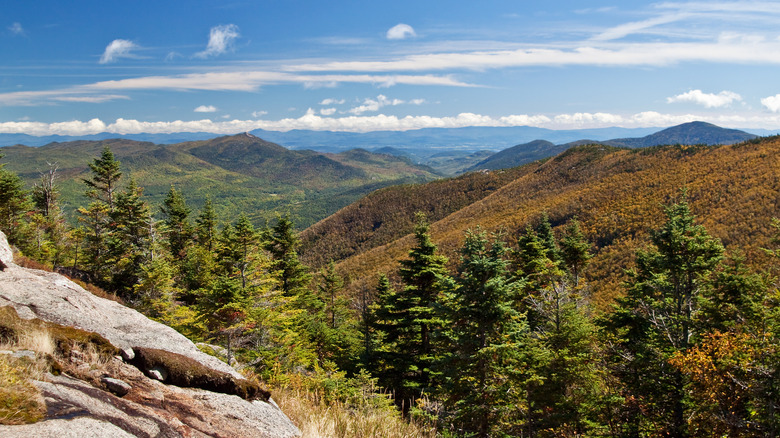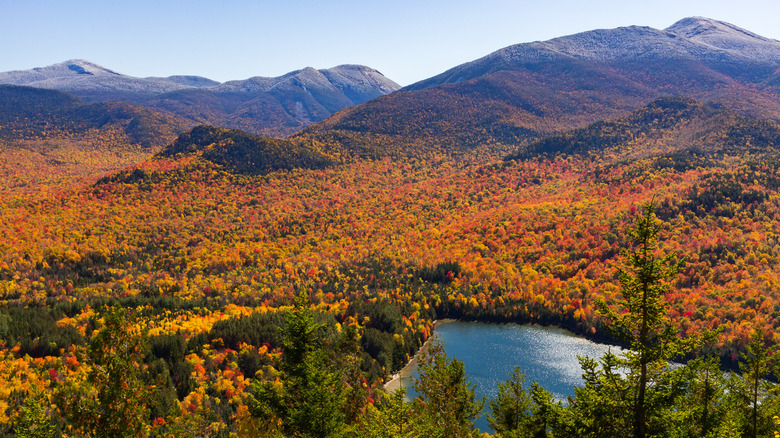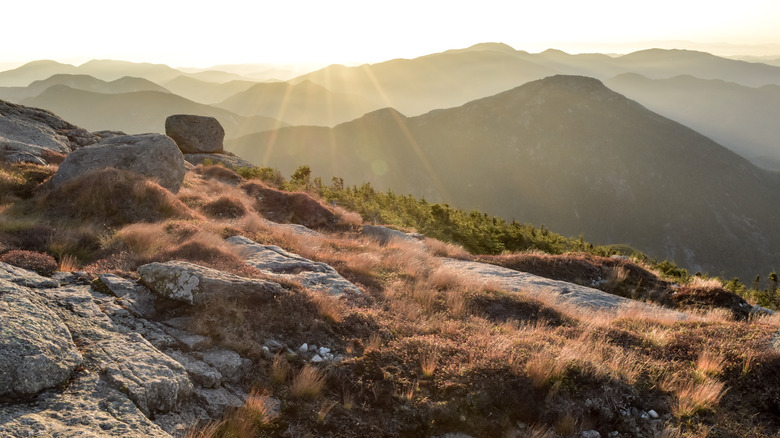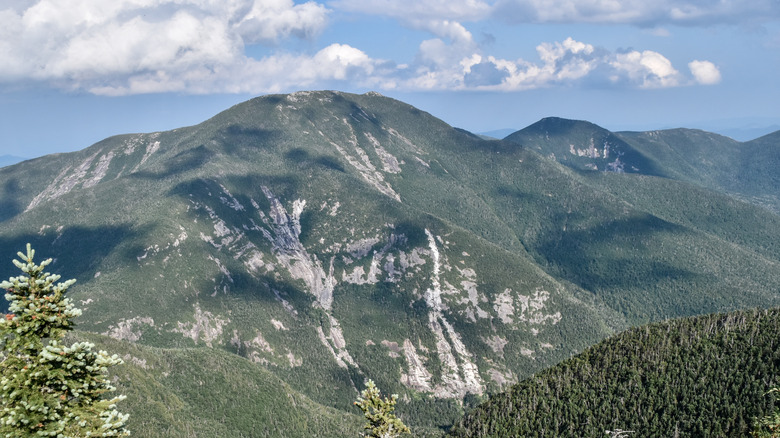These Stunning New York Mountains Hide Some Dangerous Hiking Trails
The massive 6 million-acre "forever wild" Adirondack Park is famous for its incredible hiking trails and uninterrupted wilderness. It is also home to all of New York's 29 tallest mountains, including the over 5,300-foot-tall Mount Marcy. Unsurprisingly, climbing the tallest of the Adirondack Mountains has become an exciting challenge for enthusiasts, and some return year after year to repeat their favorite journeys. For the uninitiated, however, some of those hikes can be extremely dangerous.
Most hikes can be relatively safe if you are experienced and prepared with safe hiking gear that is appropriate for the conditions, just as almost any hike can be dangerous if you are not. Still, some hiking spots in Adirondack Park are inherently more dangerous than others and should only be attempted by those who have the skill to do it safely. There are hikes at every level in the Adirondacks, from the beautiful Lampson Falls Trail, which is accessible and offers incredible waterfall views, to the infamous Trap Dike, a potentially risky rock-climbing path up the side of Mount Colden, where guides often tie their clients to ropes in case they fall.
Many incidents occur in the Adirondack High Peaks
In the winter of 2019, 34 rangers and 12 volunteers were forced to go up into the Adirondack High Peaks to rescue a hiker who had slipped on an icy trail and fallen off a high ledge. According to New York State Ranger Robbi Mecus, who led the rescue, this isn't a unique occurrence. Inexperienced and underprepared hikers often venture into the famous High Peaks — the 46 highest mountains in the Adirondack Park — and get into trouble. These mistakes can be deadly, especially in winter.
A study of search and rescue incidents in the Adirondack Park from 2015 to 2016 found that in that year alone there were 528 such events, with a large amount of them happening in the High Peaks. 78% of all those search-and-rescues were for hikers, with almost half of them losing their way and needing to be found by an official search team. Most reported injuries were caused by slipping and falling while traversing the rough terrain.
As dangerous as they may be to the uninitiated, however, some experienced hikers actually thrive in these challenging mountains. In fact, there is a group called the Adirondack 46ers just for people who can prove that they have successfully made it to the top of all 46 of the Adirondack High Peaks during the more challenging winter season.
The Great Range Transverse
"Hardest, most unforgiving terrain I have come across in the Adirondacks," one poster on All Trails wrote about the 19.5-mile hiking trail known as the Great Range Transverse, "but it makes a great adventure!" This hiker was not alone in considering the trail difficult. In fact, The Great Range Transverse is generally considered the most dangerous and challenging of all the High Peaks trails. The trail takes hikers up almost 9,500 vertical feet, and includes the summit of the tallest mountain in New York State, Mount Marcy.
Although Marcy may be the tallest, it is not necessarily the most dangerous edifice on this trail. Saddleback Mountain includes some of the steepest scrambles in the region, with terrifying views of the exposed drop below. Mount Haystack is only the third tallest mountain in the Adirondacks, but it may be the most treacherous for hikers. While the top provides a staggering view of New York's biggest, most stunning wilderness, the journey there can be grueling. It is often called the most dangerous of all the High Peaks. The steepest section is known as the Devil's Half Mile because it is so perilous.
Other dangerous hikes in the Adirondacks
None of the 46 mountains included in the Adirondack High Peaks should be taken lightly. While many visitors successfully summit these mountains every year, dangerous weather conditions, slippery trails, and steep scrambles can be extremely hazardous for the inexperienced and unprepared.
The Seward Mountains are four high peaks — Seymour, Seward, Donaldson, and Emmons — that can be extremely challenging, and for those looking to reach the summit of each, they are even harder. Unlike some of the other High Peaks, there is no officially maintained trail to get to the top, so hikers have to rely on paths made by the hikers who came before them.The Dix Range, which includes Dix, Macomb, Hough, Carson Peak, and Grace Peak, includes some extremely steep slides, some of which may require ropes to traverse safely. New climbers are advised to only attempt this range with the assistance of more experienced hikers and climbers.



